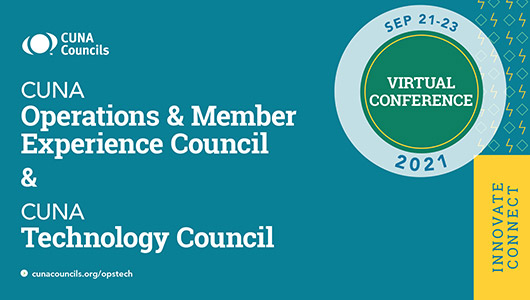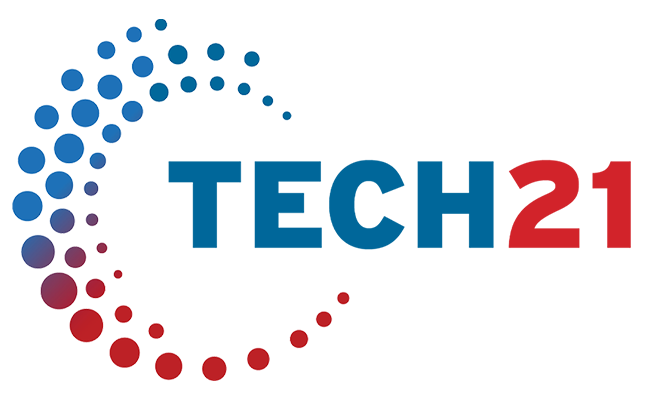
‘IT feels like home’
Emily Jannereth found a natural progression from zoology to technology.
Emily Jannereth was recently promoted to chief technology officer at $915 million asset LAFCU, where she is responsible for planning, establishing, and administering strategy for the Lansing, Mich., credit union’s technology, including its remote infrastructure.
While Jannereth comes to the role with 17 years of credit union experience, including several years in operations, she doesn’t have a traditional career focus on technology.
Credit Union Magazine: Tell us about your credit union journey.
Emily Jannereth: When I settled on zoology as an undergraduate major, my parents said, “What the heck are you going to do with that?” At graduation, my boss at the time recommended a credit union, as her husband led its information technology (IT) department and said credit unions were a great place to work.
I applied thinking it would be a short-term job while I determined what scientific field to pursue at the graduate level. Well, that graduate degree became business administration and 17 years later here I still am in the awesome credit union industry.
I never wanted to sit still and have been fortunate to work in these credit union roles or departments: credit/debit cards, collections, foreclosures, loss prevention, contact center, interactive teller machines (ITMs), eServices, branch operations, and lending.
Each of these experiences taught me a different aspect of our business and how every employee is woven together to serve our members. This was more of a natural progression in my career than even I originally thought: the balance of technology and data, the constant change and growth, all while providing exemplary service. IT feels like home.
Q: How do you compensate for your lack of formal IT training?
A: This is the first role I’ve walked into without hands-on experience. An IT leader doesn’t need to be able to write programs or build servers—I have scary-smart people on my team who do that. My job is to listen to their advice, ask questions, and learn while keeping the team focused on member needs, employee efficiency, and LAFCU’s strategic direction.
LAFCU CEO Pat Spyke does say my scientific background is handy. Asking questions and continual education are important to me. On Day 1 in this role, I learned to say, “I love what you just said—what exactly did it mean?”
Online trainings, joining an IT council, working closely with vendors, and contacts at other credit unions have also been key resources. I’m also considering creating flashcards of IT acronyms like we did in school to learn the vocabulary of a foreign language.
Q: How do you balance the human touch with today’s emphasis on automation?
A: As much as it may hurt our credit union hearts, banking needs are an errand for members. Car wash, credit union, soccer practice. We all know the way we interact with and serve our members is changing through technology, but that doesn’t mean it’s a “cold” interaction.
You can still professionally joke and connect with members. Send a thumbs-up or smiley emoji through online chat or wear a goofy hat while serving members through an ITM. So much of what we do is to teach members how to leverage technology to make their financial management easier. What’s more impactful than that?
We don’t want the fear of looking ridiculous or breaking something to prevent a member from using new technology. We’ll show you how to use an ITM or remote deposit and we’ll online chat with you and explain where on your account you can more easily access what you need.
Technology is the tool. It’s the people who teach and use those tools who matter.
Q: What lessons about technology have you learned from the pandemic?
A: To be agile and to create our own solutions. Technology was key in serving our members and keeping our employees safe as the pandemic began. In March 2020 I was transferred from operations to IT as emergency technology officer to assist in building a remote work environment. My team had over 90% of our employees home safely within six days of the Michigan “Stay Home, Stay Safe” order in March.
All LAFCU drive-thrus are served by employees through our ITMs. Our manufacturer said it was impossible to run ITMs from a remote environment—but LAFCU doesn’t like being told “no.”
So, our network team figured out a solution to carry the audio and visual needs of an ITM session leveraging virtual desktop infrastructure (VDI). This allowed LAFCU to provide uninterrupted, safe, virtual member service throughout all branches.
I’m so proud of our staff who became their own mini help desk. We all even learned to regularly check our home internet speeds. The more empowered our teams can be with understanding, using, and troubleshooting their equipment, the less down-time and greater service we can provide.
What the IT team accomplishes should be transparent and taught to others as much as possible. This naturally produces agility and problem solving.
NEXT: What are the biggest causes of friction in your processes?
Q: What are the biggest causes of friction in your processes?
A: I think back to my days playing volleyball. You had to call “mine” if you were going for the ball, otherwise you’d collide with a teammate or you’d all stare at each other as the ball hit the floor with angry, “I thought you’d get it” expressions. The best ways to reduce friction is through education and communication.
Friction is reduced by working through processes we haven’t looked at recently. We break down “that’s how it’s always been done” and converting it to “we can improve this.”
LAFCU has made this a focus for five years and is still at the forefront of what we look at daily. We have worked to leverage tools such as DocuSign, which has become crucial during the pandemic. We learned a lot through a remote work environment that has reduced our reliance on printers and paper, embracing technology for smoother processing.
Another way we reduce friction is knowing that the more information and practice we provide, the more comfortable and confident we become using our own products and services and, therefore, in teaching members.
The great part about hands-on teaching is that you get immediate feedback from members: what makes sense, what doesn’t, what would be better, what’s so awesome we should never change it.
Education and communication are a two-way street. Recognizing and paying attention to that reduces friction and pushes us forward.
Q: What makes processes easier for employees?
A: During my time in contact centers, I began to visualize employees as air traffic controllers. All staff sit in front of a control panel (computer) and need tools to navigate systems, access information, research, and provide solutions.
But each role within the credit union needs a different control panel. A process can only become easier for someone if it’s a solution they need.
It’s critical to include employees in all decisions, from new software and hardware to processes and procedures. For projects at LAFCU, we create committees consisting of staff from multiple areas who will be end-users. Having all team members understand the problem and goal helps with finding and building the most impactful solution and the right vendor partner.
This coming year, one of my goals is to have each member of my team sit with a different area and watch them use the equipment and programs. What takeaways did we have that IT can help with? Any tool our department provides is only as good as the end user’s experience.
Q: What are your top technology priorities?
A: Asset management, updating help desk software for better statistics and ease of use for all parties, increased transparency of IT projects, and refreshing standard operating procedures.
I consider these to be the “low-hanging fruit” opportunities. Longer term, reinforcing our remote work environment, end-user troubleshoot training, cloud computing, and, like the rest of the world, a ceaseless focus on security.
Q: What emerging technologies have you excited?
A:As someone who is fairly new to this, a lot is exciting and seems to have potential to increase efficiency and service. LAFCU will continue to focus on our ITM fleet and push forward with creative ideas to use them for more than a “traditional” teller transaction.
My team also continues to monitor artificial intelligence and its potential for increased fraud detection and risk analytics.

